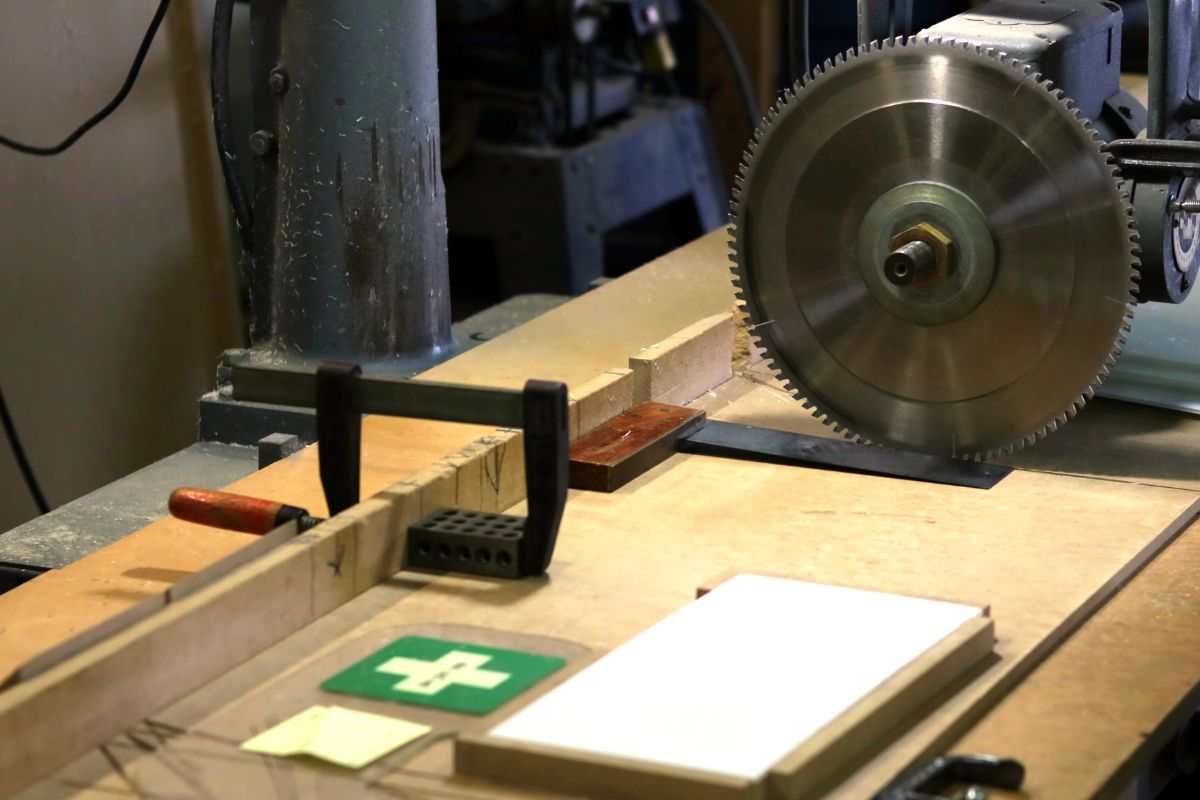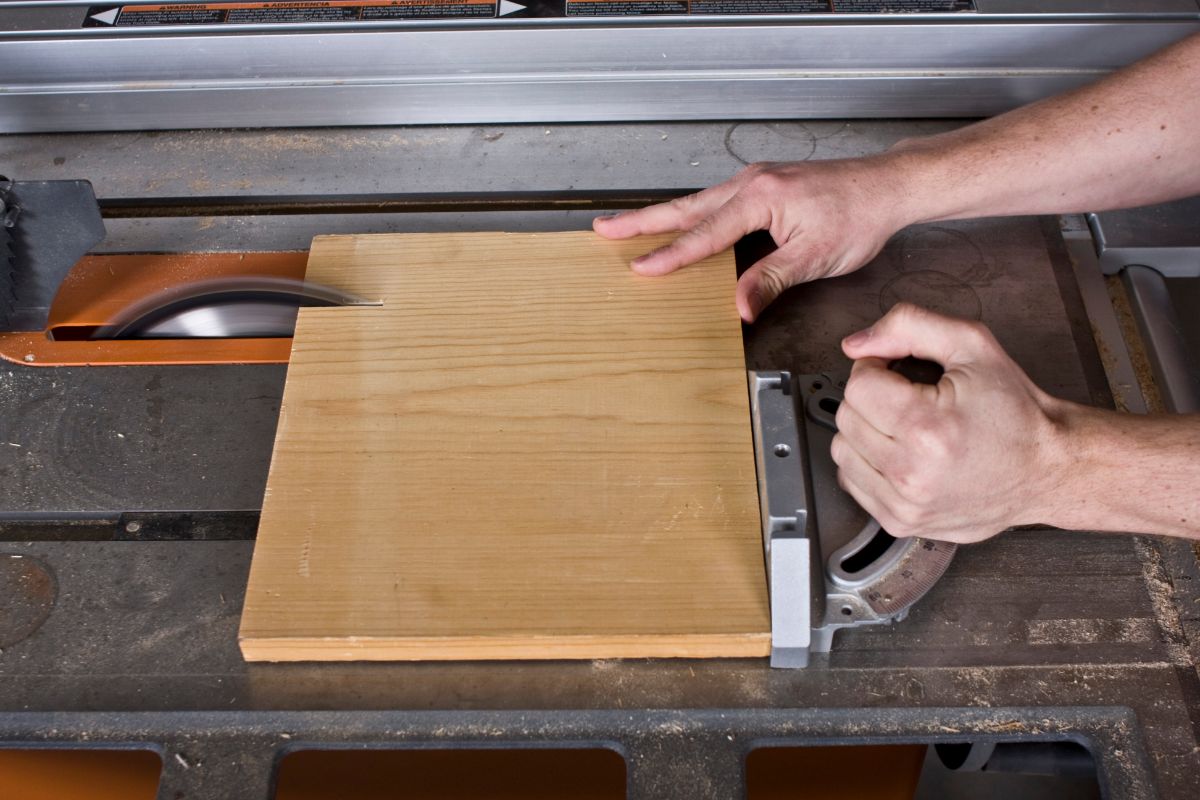- You are here:
- Home »
- Table Saws »
- What Is Rip Capacity On A Table Saw?
What Is Rip Capacity On A Table Saw?
When it comes to ripping wood, the rip capacity of your table saw is something super important that you need to consider before you devote yourself to table saw.
As a result, a lot of people need to know what kind of rip capacity they need for their work – but a surprising amount of people don’t actually know what rip capacity even means!

So, if you are unsure what the rip capacity is on a table saw, then this is the place for you. We are going to be discussing rip capacities including what they are and how they can affect you.
This way, you can understand what they are and work out which kind of table saw is best for you!
What Is Rip Capacity On Table Saws?
Rip capacity refers to the space between the edge of a saw table and the fence’s edge when it is at its maximum extension.
It is used as a ‘marketing’ metric used to measure how much space you have on a table saw to work with when it comes to ripping wood.
This means that rip capacity of a table saw can be increased simply by extending one side of a table and by readjusting the fence and railing.
Some people even remove the fencing of the tablesaw whenever they need the additional space. This means that the marketed rip capacity on a tablesaw is not always the true ‘extended’ rip capacity.
Alternatively, you can purchase a table extension.
So, in layman’s terms, the rip capacity of a table saw refers to the space between the fence and the edge of the table – the total space you have to rest your wood and work with.
How Much Rip Capacity Do You Need?
Each saw table will market itself with a certain amount of rip capacity, measured in inches. Some range from portable tables that are only a few inches wide and others can be 32 inches wide!
This range means that when looking for a saw table of your own, you will seriously need to think about how much rip capacity you need.
So, how much rip capacity do you need?
Every person will need a different rip capacity on their saw table because everyone works on different projects.
However, most sheets of plywood are sold in sheets as long as 24 inches so if you know that you will be working with a lot of plywood, then a table saw that has a rip capacity of 24 inches is a good place to start.
If you know that your materials are never so long, then you can get away with a narrower table saw with a rip capacity of 22 inches instead.
In general, a 24 or 22 inch rip capacity saw table is adequate to get most projects done but there are other factors that can push you to have a smaller saw table.
You should also think about how much space you have in your workshop or garage.
There’s no point in purchasing a table saw that is too wide to fit into the space you have – so rip capacity is also limited by how much space you have in your workshop!

It’s also worth noting that the more rip capacity a table saw has, the more the price will increase. So, you may also be limited by your budget when it comes to your ideal saw table’s rip capacity.
So, how much rip capacity you need in your saw table comes down to three main factors: the size of the wood you usually work with on your projects, the space you have in your garage or workshop, and how much you are willing to spend on purchasing your saw table.
Left Rip VS Right Rip
When searching for the right table saw for you, you may notice that a lot of manufacturers and retailers will mention the left and right rip capacity of a saw – but they don’t actually explain what this means.
Left rip and right rip capacity refers to how much capacity there is on both sides of the saw.
Most table saws will only be labeled with left rib or right rib capacities, and more table saws will have more rip capacity on the right side of the saw blade rather than the left.
Why this is the case is uncertain but most assume it’s because most people are right handed.
So, if you see a saw table with right rip capacity – this means that the table extends on the right side of the blade and fence. Alternatively, a saw table with left rip capacity extends to the left of the blade.
Portable VS Stationary Tables
Table saws come in two main types – portable or stationary – and both types have different ripping capacities.
Stationary table saws generally have more ripping capacity than the portable versions, but this does come at a price – literally.
Stationary table saws are also more expensive to purchase but they also come with rip capacities reaching as high as 50 inches.
Portable table saws are smaller and thus have less ripping capacity so they are easier to carry around from place to place.
This means it’s easier to work with when working on multiple projects in different locations – but this can be an issue if you work with especially large sheets of wood.
Luckily, most portable models have an average ripping capacity between 20 to 24 inches – which makes them almost perfect for home and personal use!
So, depending on what projects you plan on using your table saw for, a portable table saw might be the right one for you even if you don’t plan on taking it from one place to another.
Final Thoughts
Rip capacity is a term often used by manufacturers and retailers to explain how much space you have to work with when using a table saw.
It refers to the space between the fence and the edge of your table.
However, this space can be extended with the help of extensions or simply by removing the fencing, giving you more space to work with larger sheets of plywood.
As a result, rip capacity has a lot of influence over the cost of a table saw and it is a factor you need to consider before buying your own table saw.
About the Author David Vieria
David has been a woodworker for most of his life — in his dad’s cabinet shop. After using the tools himself, he decided to share it his woodworking and power tools knowledge with DIYers. Read more about him
